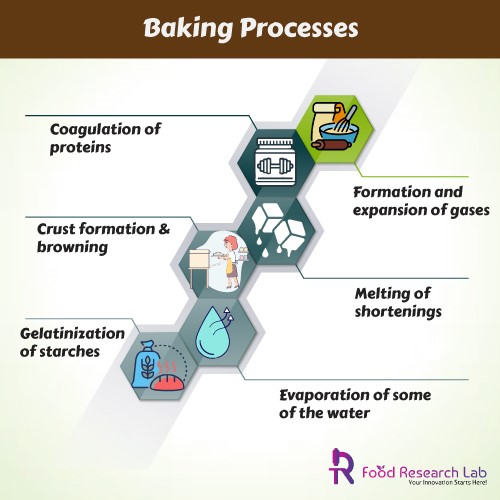
Baking Processes
Baking is the final stage in creating yeast- and chemically-leavened goods (bread, buns, rolls, crackers) (cakes, cookies). It’s a thermal method that involves using an oven to deliver heat to dough pieces via:
- Through hot surfaces, conduction occurs.
- The use of heated air to create convection is referred to as convection.
- Heat sources, such as fires, emit radiation.
The heat then triggers a physicochemical reaction chain that turns the raw dough into a baked product with a hard, dry crust and a soft crumb.
In general, the baking process is divided into three stages: dough expansion, surface drying, and crust browning. These can be broken down into the phases listed below (in the order of temperature increase)
- Gaseous formation and expansion (oven spring). At a core temperature of 35–70°C (95–158°F), a fast rise in volume occurs at the start of baking. This rise creates the oven spring.
- Yeast and other germs are killed. When the internal temperature reaches 60–70°C (140–160°F), the cells can no longer contribute to gas generation or volume expansion.
- Starch gelatinization. The starch begins to gelatinize as granules get completely inflated with local free water at 76°C (170°F). The dough is transformed into bread, and a structure is established thanks to starch gelatinization and protein denaturation.
- Gluten (egg or other) proteins that make up the continuous phase coagulate/denaturation. The proteins begin to denature about 60 to 70°C (140 to 160°F). As a result, gluten gets tougher and stiffer as it forms an irreversible gel. Moisture loss also makes the baked product more rigid.
- At 80–95°C (176–203°F), enzymes in the dough (naturally occurring or added) are inactivated.
- Browning and the development of a crust (non-enzymatic browning reactions and caramelization). Maillard browning occurs when a reducing sugar and an amino acid are present at temperatures over 105°C (220°F). At 160°C (320°F), the sugar caramelizes.






